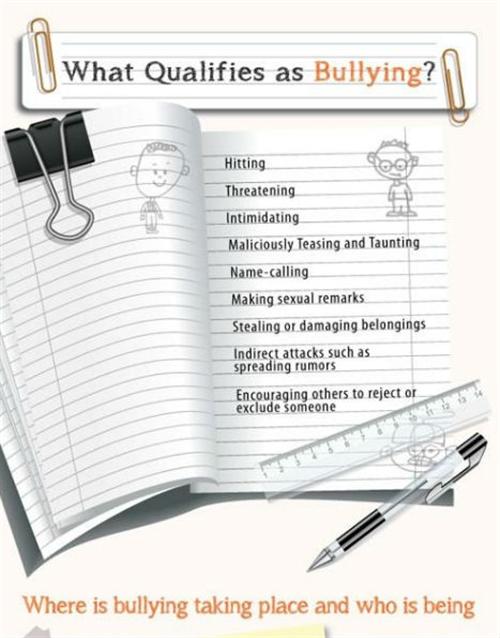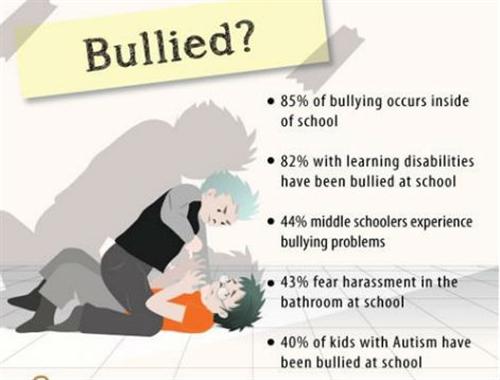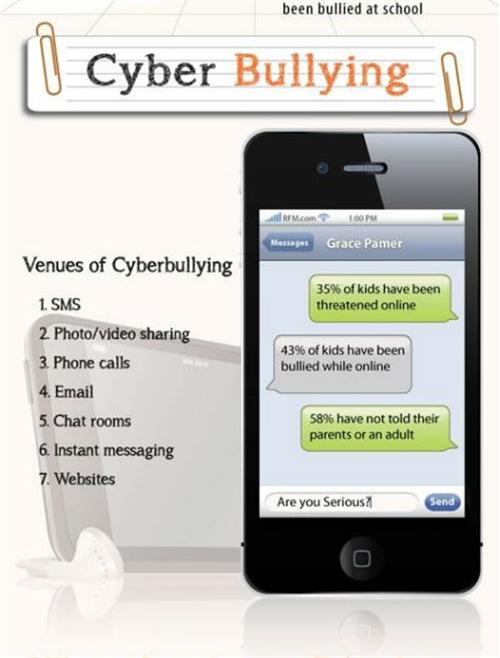-
Bullying
HISD'S POLICY ON BULLYING
HISD encourages all students and staff to foster a climate of mutual respect in order to enhance the learning environment. In this sense, students should not engage in harassment conduct, which shall result in disciplinary action.
HISD prohibits bullying conduct which includes repeated, unwelcome and offensive slurs, jokes, or other oral, written, graphic, or physical actions related to an individual’s race, color, religion, national origin, or disability that harms another student’s physical or emotional health or safety.According to HISD’s Student Code of Conduct, reports of bullying shall be made as soon as possible after the alleged act or knowledge of the alleged act so that the District’s ability to investigate and address is not impaired.Click here for more information.
Bullying Definition:
Bullying is unwanted, aggressive behavior among school aged children that involves a real or perceived power imbalance. The behavior is repeated, or has the potential to be repeated, over time. Both kids who are bullied and who bully others may have serious, lasting problems.In order to be considered bullying, the behavior must be aggressive and include:- An Imbalance of Power: Kids who bully use their power—such as physical strength, access to embarrassing information, or popularity—to control or harm others. Power imbalances can change over time and in different situations, even if they involve the same people.
- Repetition: Bullying behaviors happen more than once or have the potential to happen more than once.
- Bullying includes actions such as making threats, spreading rumors, attacking someone physically or verbally, and excluding someone from a group on purpose.
Types of Bullying
There are three types of bullying:1. Verbal bullying is saying or writing mean things.Verbal bullying includes:· Teasing· Name-calling· Inappropriate sexual comments· Taunting· Threatening to cause harm2. Social bullying, sometimes referred to as relational bullying, involves hurting someone’s reputation or relationships.Social bullying includes:· Leaving someone out on purpose· Telling other children not to be friends with someone· Spreading rumors about someone· Embarrassing someone in public3. Physical bullying involves hurting a person’s body or possessions.Physical bullying includes:· Hitting/kicking/pinching· Spitting· Tripping/pushing· Taking or breaking someone’s things· Making mean or rude hand gestures
Teasing and Conflict
Often you will hear these words used together when discussing problems among school children but the words are not interchangeable and actually have very different meanings. The biggest difference has to do with the balance of power.Conflict occurs between two people on fairly equal footing. Each person contributes to the problem and to the solution.Teasing is also usually a two-way street in which both parties are talking and dishing out. Many times our children will come home from school and complain of being teased, “Bill said I looked funny.” As parents, your protection instincts kick in immediately. Parents want to call Bill’s house and confront his parents or call the school and demand something be done about what perceived as bullying. Often times parents fail to see the other side of the story, which is that little Bill, called the other child “ dumb” in that same scenario. Bill and the other child are on equal ground. In this situation, both Bill and the other child need to learn respect, empathy and tolerance. They also need to learn strategies to deal with teasing rather than just bite back.Bullying occurs when there is an imbalance of power and that is continually repeated over a period of time. The more powerful person uses his/her power to hurt or control another person. Bullying is deliberate and intended to harm others. It can include physical aggression, verbal taunts, put-downs, intimidation and exclusion.














